Application modernization is behind every digital transformation that expands the functionality of a company’s IT systems. It paves the way for improving the customer experience, streamlining business processes, and boosting profits.
Modernization efforts focus on updating legacy applications and/or replacing them with cloud-native apps, but it doesn’t begin there. A successful application modernization strategy starts with a solid business case that conveys the project’s business value to the C-Suite.
Your modernization project will only get off the ground once you’ve received buy-in from company leaders and key stakeholders, so we’ve written this brief guide to building your application modernization business case.
Present the Challenges With Current Systems
Non-technical executives don’t always understand the serious problems of sticking to legacy applications for years, so it’s important to highlight these challenges in stark relief.
Leaders and key stakeholders must understand that giving up mainframes and monolithic systems for new technologies isn’t about purchasing something new for its own sake.
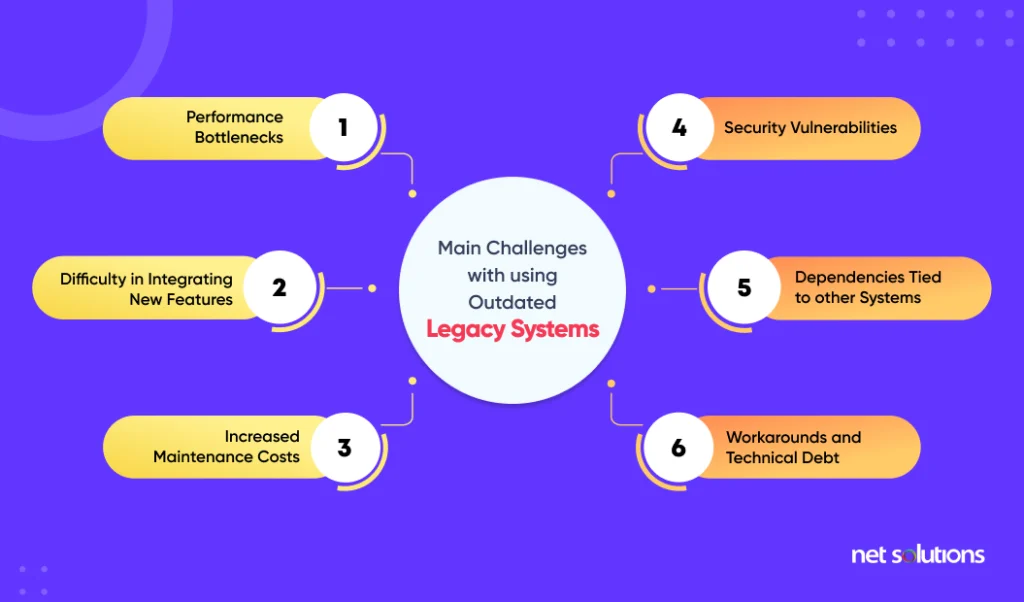
Legacy systems come with severe risks and complications. Here are some common issues with legacy apps:
- Performance bottlenecks
- Challenges integrating new features
- Increased maintenance costs
- Security vulnerabilities
- Dependencies tied to other systems
- Workarounds and technical debt
These are some of the app modernization drivers that push companies to modernize. When writing your business case, highlight specific examples of how your legacy systems impact business operations and customer experience.
List the Key Benefits of Application Modernization
Once you’ve outlined the problems associated with legacy systems and a refusal to modernize, it’s time to sell the benefits of your app modernization initiative. The following four benefits are key selling points that clarify the case for modernization.
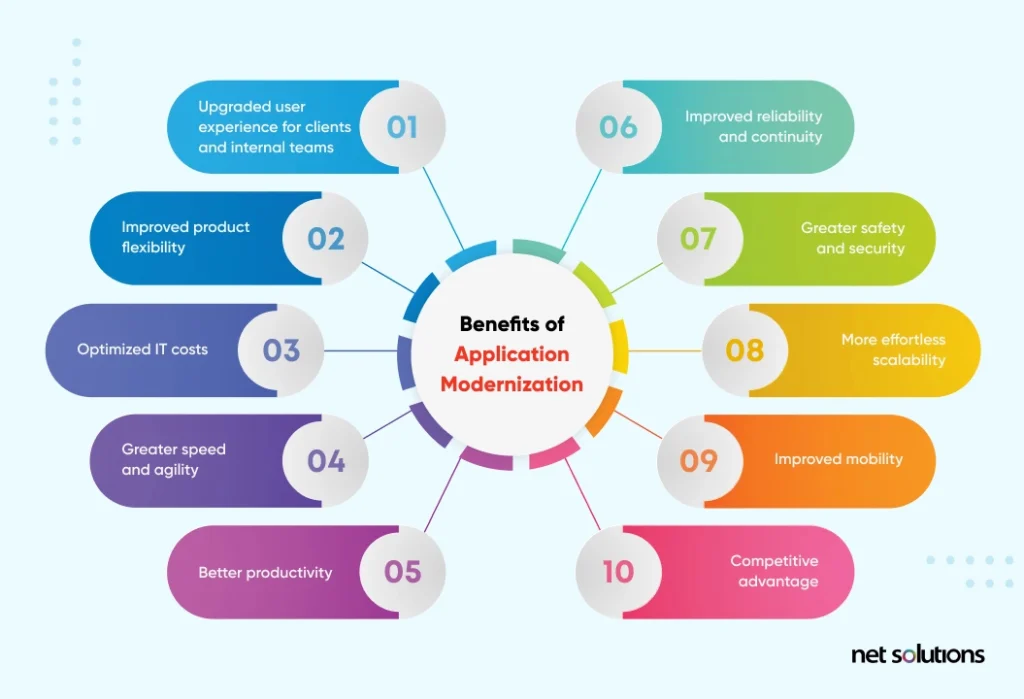
Benefit #1: Improved performance, efficiency, and productivity
Modern applications interface well with one another thanks to their API-first architecture, and they do so without creating excess dependencies thanks to containerization and microservices technology.
Modern architecture optimizes resource utilization and streamlines processes to create stable, high-performing, efficient systems. This improves the performance of internal and customer-facing apps, leading to greater productivity and an improved customer experience.
Benefit #2: Reduced operational costs
App modernization requires a significant investment upfront, but it tends to reduce operational costs over the long haul. It’s important to stress the anticipated long-term cost savings associated with your app modernization program.
How does app modernization reduce operational costs?
- Reduced maintenance expenses thanks to modern apps that work with cloud-based architectures and require fewer workarounds, security patches, and other fixes
- Fewer hardware requirements since modern apps are typically cloud-native and designed to function without the support of outmoded hardware
- Efficient use of cloud resources that typically use a pay-as-you-go model, such as Amazon Web Services (AWS)
Benefit #3: Improved security
Unlike many legacy apps, modern apps work with the latest security measures; providers still offer regular security updates. They also use the latest encryption protocols and implement robust access controls to reduce the risk of being hacked.
Compare that to monolithic systems. Legacy apps won’t necessarily use the latest security protocols because they were designed for yesterday’s world. This often requires teams to spend extra time and money monitoring and fixing security holes, which might not even do the trick.
Ensure your leaders and stakeholders understand that companies that refuse to modernize may incur far greater costs, in the long run should their systems get hacked and their data compromised. Events like this might sink your company, and leadership may be liable for negligence.
Benefit #4: Maximized scalability and resilience
Some of the most significant benefits of modernization are flexibility, scalability, and resilience, especially in a rapidly changing economic landscape. Be sure to stress these benefits to company leaders because their job involves planning for the future.
Monolithic systems are rarely scalable, but scalability is at the core of cloud-based computing and its associated pay-as-you-go models. Should business grow quickly, and every CEO hopes it does, a modern, cloud-based infrastructure means that spikes in traffic won’t leave your customers waiting forever for pages and screens to load.
Flexibility also means that a drop in business or traffic won’t have the company paying for computing power they’re not using. Plus, if you need to add new functionality quickly, modern architecture allows for the fast introduction to new software systems that are less likely to impact existing systems and their dependencies.
Demonstrate How App Modernization Aligns With Business Objectives
When presenting a case for taking on app modernization services to business leaders, it’s important to stress that modernization isn’t just about improving technology on the backend. It has a direct impact on the customer experience, and it feeds into larger business objectives.
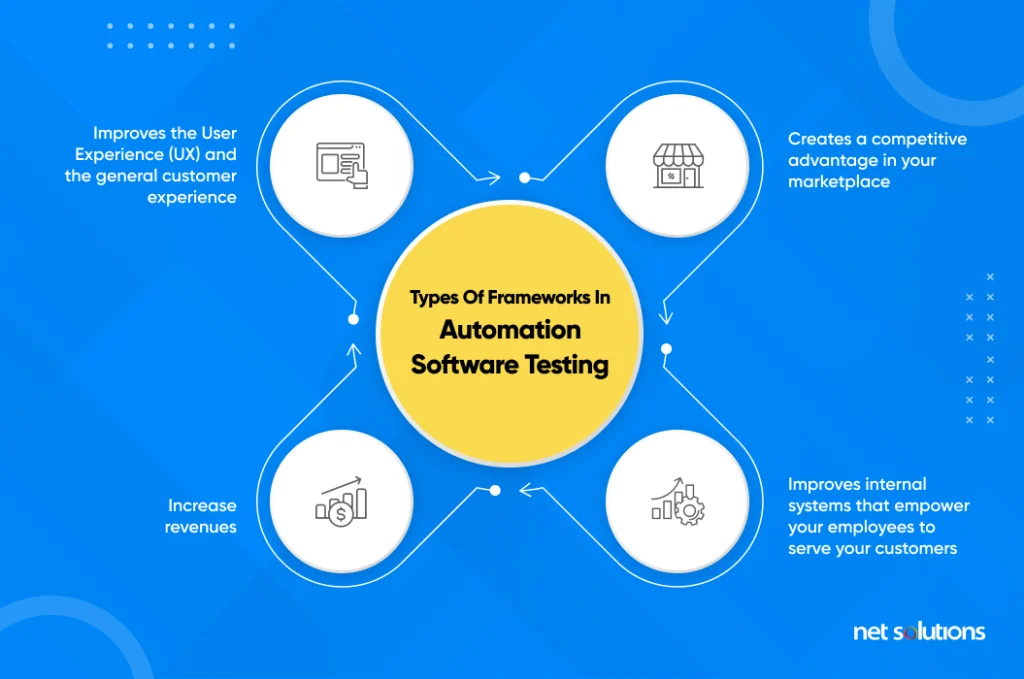
When laying out your prospective app modernization roadmap, highlight key metrics demonstrating your proposed changes’ tangible business benefits. Identify the ways that app modernization:
- Improves the User Experience (UX) and the general customer experience
- Increases revenues
- Creates a competitive advantage in your marketplace
- Improves internal systems that empower your employees to serve your customers
Paint a picture of the powerful impact new technology provides by discussing not just the features of the technology (e.g., microservices architecture and containerization) but the benefits (e.g., flexibility, scalability, fewer dependencies).
Conduct a Cost-Benefit Analysis
An essential element of your app modernization business case will be your cost-benefit analysis since business is all about the bottom line in the final analysis.
Executives may fully grasp how app modernization leads to cost savings, but they aren’t likely to take action without a detailed accounting of the expenses and anticipated return.
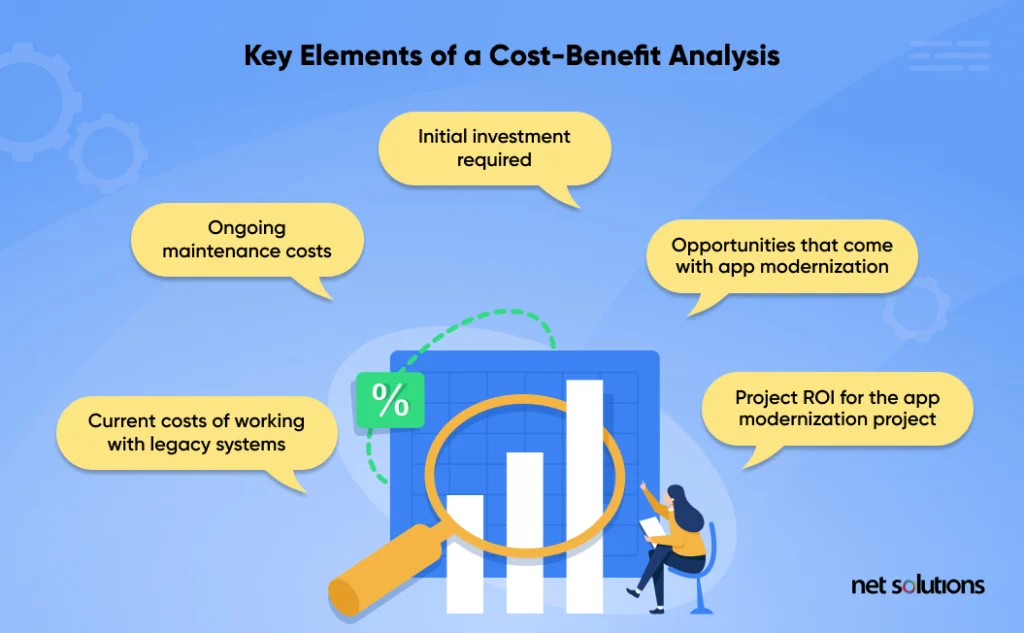
The cost-benefit analysis section of your business case should include:
- Initial investments required (e.g., new software costs, outsourcing support, licenses, in-house productivity required)
- Ongoing maintenance costs for the new systems
- Current costs of working with legacy systems (including downtime, maintenance, etc.)
- Opportunities that come with app modernization (including increased customers and opportunities to grow and penetrate new markets)
- Project ROI for your app modernization project
The case for app modernization is usually apparent in a detailed cost-benefit analysis. Modernization offers massive opportunity, even when the initial investment is significant. Present a clear, honest app modernization assessment outlining the costs and potential return.
Showcase Case Studies and Success Stories
There are many real-world examples of companies that have engaged in successful digital transformation initiatives, and providing a summary of a few of these case studies can help executives envision the potential of digital transformation.
Seek examples of well-known companies engaged in app modernization similar to your design plan. Summarize the steps they took and the benefits they received, including:
- Enhanced internal processes (such as supply-chain management)
- Improvements to the customer experience
- Enhanced features that expand the functionality of websites and apps
- Cost savings
- Greater security
- Any other benefits the companies achieved
It can be helpful to find examples of companies similar to yours, even if they’re not in a similar sector or size. For example, if you’re a mid-size eCommerce company hoping to improve supply-chain management through digital transformation, outlining Walmart’s efforts in supply-chain optimization can clarify your case.
Your business case is the first step toward embracing a truly optimized, modern architecture because, with buy-in from those at the top, you may receive the budget and the support you need to succeed.
Remember, to create a compelling business case; you must appeal to everyone, from the most technically adept leaders to those who have never heard of application modernization before you presented it to them. A focus on benefits and results will do just that.
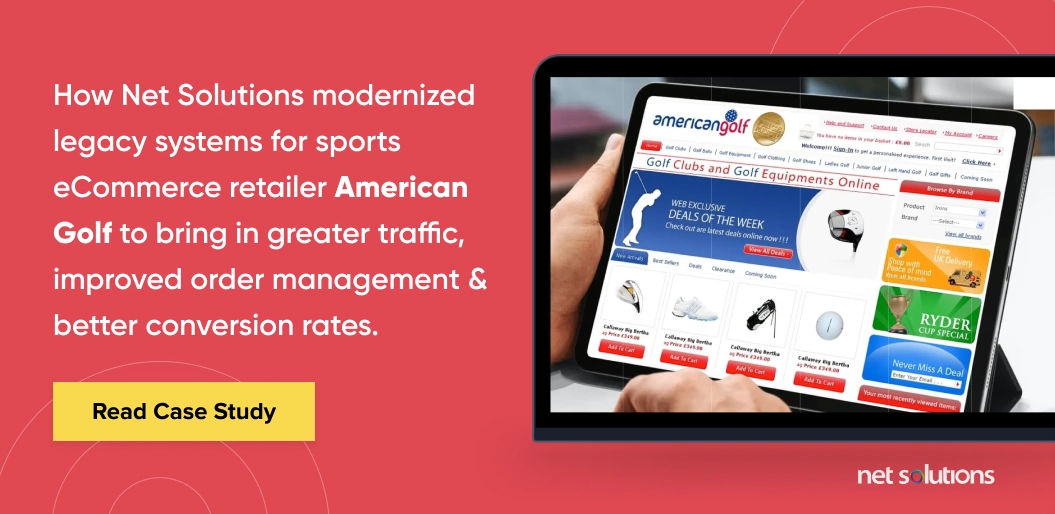
Choose the Right Application Modernization Partner
App modernization is not something the typical in-house IT professional does every day—they’re focused on their day-to-day specialties, which is why you hired them. That’s why most companies look to an outsourcing partner with a proven track record in app modernization.
Net Solutions has led countless enterprise app modernization initiatives, handling every aspect of the program from project management to Quality Assurance (QA).
We’ve worked with industry leaders like American Golf and Euro Car Parts, and we can help you achieve a painless transition that will reap all the rewards of a modern cloud-based infrastructure. Consult us for your modernization needs.
SHARE THIS POST
Table of Contents
Related Services
Related Resources
- A Framework-based Approach for App Assessment
- App Modernization Benefits To Boost Your ROI and Future-Proof Your Business
- 11 Top Application Modernization Best Practices in 2024
- Legacy Application Modernization Case Studies & Success Stories
- Solving the Toughest Application Modernization Challenges
- Cloud-Native Application Modernization: Benefits & Strategies
- 8 Core Application Modernization Drivers
- Enterprise Application Modernization: Complete Guide [2024]
- Lift and Shift: The Modernization Formula for Legacy Apps
- Navigating Application Migration and Modernization [Guide]
- Application Modernization and Optimization: A Complete Guide
- A Practical Approach to Application Rationalization: A CIO's Guide to Managing Complexity and Reducing Costs
- What is Replatforming? A Beginner's Guide to Upgrading Your Technology Stack
- 7 Steps to Build an Effective Application Modernization Roadmap
- Application Modernization Services Market: Comprehensive Analysis
- A Step by Step Guide to Application Modernization Strategy
- Explore the Best Application Modernization Tools and Resources
- 13 App Modernization Trends That Can Support and Optimize Your App Modernization Strategy

